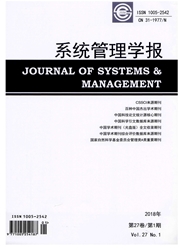

 中文摘要:
中文摘要:
根据现货与期货价格随机波动的特点,引入一种新的动态相关系数,建立了基于DC-MSV的动态套期保值模型。通过DC-MSV模型来估计动态的套期保值比率。其具体特色:①通过建立套期保值比率与具有时变特征的收益率标准差的函数关系,揭示了最优套期保值比率的时变特征;②通过建立具有时变特征的收益率相关系数的函数关系的DC-MSV模型,揭示了推动资产价格波动因素的有效信息,完整地估计了资产收益波动的交叉相关性;③实证研究表明,该模型优于现有流行的套期保值模型。通过建立基于沪铜现货和期货的最小方差套期比的动态套期保值策略进行实证研究。研究结果表明,套期保值模型在样本期外和样本期内套期保值效果都明显优于Naive和OLS套期保值策略。
 英文摘要:
英文摘要:
Hedging is an act that spot position holders take the adverse transaction in futures market to avoid spot price risks. Traditional hedging lays emphasis on the simple static hedging strategy and fails to reflect the time -varying characteristics of market risk effectively. According to the stochastic fluctuant characteristics of spot and futures price, this paper puts forward a new dynamic correlation and sets up a dynamic hedging model basd on the dynamic correlation multivariate stochastic volatility model. The major innovation of this paper is that it estimates the dynamic hedge ratio by DC-MSV model. The characteristics lies on three aspects: Firstly, it reveals the time-varying characteristics of optimal hedge ratio by constructing the function relationship between hedge ratio and time-varying standard deviation of spot and futures returns. Secondly, by establishing DC-MSV model with time-varying correlation coefficient, it reveals the valid information of the factors which drive the price fluctuation of assets, and fully estimates the cross correlativity of price fluctuation of assets. Finally, the empirical study shows that the efficiency of DCMSV model is superior to the current popular hedging models. This paper takes an empirical study based upon dynamic hedging of minimum variance hedge ratio of spot and futures of Shanghai copper, and the resuits show that DC-MSV model performs better than naive and OLS hedging strategies on both withinsample and out-sample hedging effectiveness.
 同期刊论文项目
同期刊论文项目
 同项目期刊论文
同项目期刊论文
 期刊信息
期刊信息
